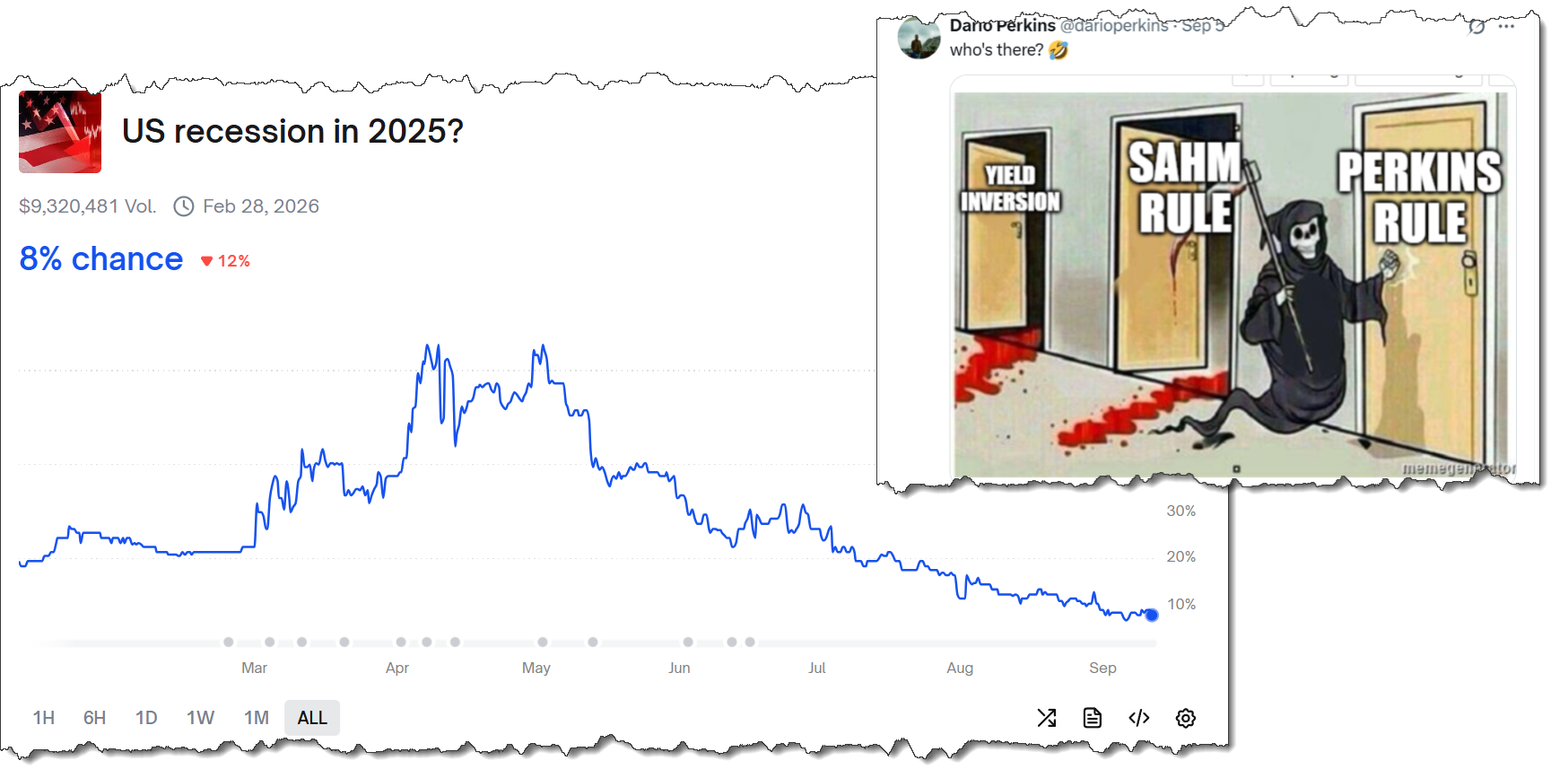Making sense of Junk
The Blind Squirrel's 'Monday' Morning Notes. Year 3; Week 37.
Making sense of Junk
Enough ink has already been spilled mocking the traditional metrics and indicators used by economists to forecast a recession. The 🐿️ is not going to join the mob.
It is clear that hard GDP data is being distorted by almost unprecedented jumbo outliers such as tariffs and AI capex. Soft data (from surveys) has been corrupted by dire response rates. Sentiment data is fast becoming about as useful as political polls. Tough times for those poor economists.
I cannot believe that it was exactly 1 year ago this week that I was writing on the issue of failed recession indicators.
This time last year, defensive equity sectors (utilities, staples and healthcare) were putting in monster rallies; retail was loading up on TLT 0.00%↑ call options in anticipation of jumbo rate cuts; and commodities were trading in the gutter.
It felt like it was time to hedge up. However, in the aftermath of that August’s “yen carry” risk unwind, most conventional insurance products were looking expensive. But hedging options in credit markets appeared to offer the best value.
Armed with some excellent data crunched by my friend (and future podcast collaborator - watch this space - Ben Brey of Capital Misallocation), high yield spreads were sitting at their 1st percentile in terms of cheapness (on a 12-year look back).




